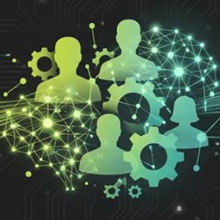Book Review: Mathematical Mindsets
 Dr Jo Boaler, the Nomellini-Olivier Professor of Mathematics Education at Stanford University. Photo credit Robert Houser Photography |
Mathematical Mindsets: Unleashing Students' Potential Through Creative Math, Inspiring Messages and Innovative Teaching, by Jo Boaler, published by Wiley
Much of the growth in the economy will come from stem-related jobs, some of which are extremely well paid. College freshmen have heard that message; the number who say they want to major in a stem field is up. But attrition rates are very high. Students pursuing a bachelor’s degree in a stem field often switch to another major or drop out — many find they simply don’t have the quantitative background they need to succeed.
The roots of this failure can usually be traced back to second or third grade. In those grades, many education experts lament, instruction — even at the best schools — is provided by poorly trained teachers who are themselves uncomfortable with math. Against this backdrop, well-known British author Jo Boaler’s timely book Mathematical Mindsets provides a proven, practical roadmap to mathematics success for any student at any age.
Visual math improves performance
Boaler, a Stanford University Professor of Mathematics Education, drills deep into what holds students back when it comes to math and how to unleash their potential through creative math. Boaler is in the "reform" school of thought about mathematics education. She argues that new approaches — group work, real-life examples and solving problems students can relate to — have the potential to transform the way students interact with mathematics.
“Some of the world’s top mathematicians engage almost entirely with visual mathematics,” notes Boaler.
For example, Maryam Mirzakhani, an Iranian mathematician and a professor of mathematics at Stanford University, arguably the most important mathematician of our time, worked almost entirely visually. In news articles she was always shown sketching ideas on large pieces of paper on her kitchen table. Maryam often joked to reporters that her 3-year-old daughter probably thought she was an artist. Older students often develop the idea that manipulatives are for babies and can’t possibly be useful in higher levels of math. The widespread lack of appreciation of the visual nature of mathematics relates to the misconceptions that exist about the nature of mathematics.
In a ground-breaking new study, brain science researchers Joonkoo Park and Elizabeth Brannon, found that the most powerful learning occurs when we use different areas of the brain. When students work with symbols, such as numbers, they are using a different area of the brain than when they work with visual and spatial information, such as an array of dots. The researchers found that mathematics learning was optimized when the two areas of the brain were communicating.
Limitations of drill and kill
Too many students are being taught to solve problems by memorizing rules and then following them like steps in a recipe, without understanding the bigger picture. For a subject that has been around almost as long as civilization itself, there remains a surprising degree of contention among experts about how best to teach math. Fiery battles have been waged for decades over what gets taught, in what order, why, and how. Broadly speaking, there have been two opposing camps. On one side are those who favor conceptual knowledge — understanding how math relates to the world — over rote memorization and what they call “drill and kill.”
On the other side are those who say memorization of multiplication tables and the like is necessary for efficient computation. They say teaching students the rules and procedures that govern math forms the bedrock of good instruction and sophisticated mathematical thinking. They bristle at the phrase drill and kill and prefer to call it simply “practice.”
Clearly, Professor Boaler, who has spent her career studying the best way to learn mathematics, upends traditional thought on the best way to teach math.
"Nothing tells us rote-learning is good. One thing it does is turn students off. One of the worst things we do to students is make them memorize times tables and then test them in speed tests. That’s the beginning of math anxiety for millions of people," points out Boaler.
 |
Keep your synapses firing
According to the author, when we learn a new idea, an electric current fire in our brain, crossing synapses and connecting different areas of the brain.
“If you learn something deeply, the synaptic activity will create lasting connections in your brain, forming structural pathways, but if you visit an idea only once or in a superficial way, the synaptic connections can “wash away” like pathways made in the sand,” writes Boaler.
“Synapses fire when learning happens, but learning does not happen only in classrooms or when reading books; synapses fire when we have conversations, play games or build things, and in the course of many, many other experiences.”
The author says that teachers must help students achieve fluency in arithmetic, the fundamentals of algebra and geometry, and later, higher-order math by “learning deeply.” At every level, and with increasing intensity as they get older, students must “think their way through” logic problems that can be resolved only with creative use of the math they’ve learned.
Collaborative problem solving
The mathematical exercises described in Mathematical Mindsets are challenging, but fun. The author promotes group learning, and collaborative problem solving. She turns math into a social exercise where ideas are shared and discussed giving everyone a better understanding.
As a journalist, I definitely find this more like a real-world environment than the way math is typically taught with students solitarily plowing through the same type of problem over and over. The best part of my job is “bouncing ideas” off fellow journalist in animated edit meetings, sharing views and trying to come up with new story ideas. Collaboration is everything.
Learning by making mistakes
Every time a student makes a mistake in math, they grow a synapse. Neuroscientists have found that mistakes are helpful for brain growth and connectivity and if we are not struggling, we are not learning. Not only is struggle good for our brains but people who know about the value of struggle improve their learning potential.
Math is about creativity and making sense
According to the author, the key to understanding math is making sense of it. Many students believe that math is a set of formulas that have to be remembered, but this belief is associated with low achievement. “Math is a very creative subject that is, at its core, about visualizing patterns and creating solution paths that others can see, discuss and critique,” writes the author.












